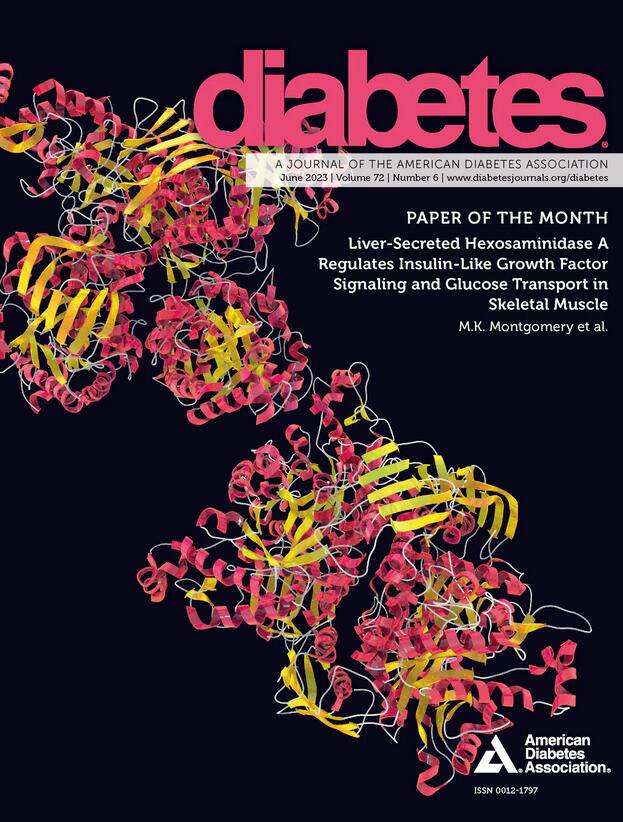108-OR: A Systematic Review and Meta-analysis of RCTs to Prevent Diabetic Neuropathy in Adults with Type 2 Diabetes
IF 7.5
1区 医学
Q1 ENDOCRINOLOGY & METABOLISM
引用次数: 0
Abstract
Introduction and Objective: Diabetic peripheral neuropathy (DPN) is a serious complication. Clinical guidelines recommend targeting modifiable risk factors to prevent DPN, but their effectiveness is unclear. We conducted a systematic review and meta-analysis to evaluate the effectiveness of treating modifiable risk factors to prevent DPN in adults with type 2 diabetes (T2D). Methods: Following PRISMA guidelines, Pubmed, Embase, and clinicaltrials.gov databases were searched for RCTs published since 1980 targeting glycemia, lipids, BP, obesity, smoking, lifestyle modification and multifactorial interventions. Two independent reviewers screened identified articles via Covidence. A third reviewer resolved disagreements. Meta-analysis for each intervention type was conducted using a random-effects model with R. Results are reported as ORs with 95% CI, p-values and I2 statistics. Results: We identified 832 articles from our search. After removal of duplicates and studies marked as ineligible through automated tools, 677 studies underwent title-abstract screening. Of these, 640 were deemed negative and 37 positives moved on to full-text screening. Another 9 studies were identified by non-systematic search. These 46 RCTs underwent full-text screening which yielded 12 studies with relevant extractable data. Meta-analysis was conducted for glycemic control: [n=6] (OR = 0.92, 95% CI 0.84: 1.01, p = 0.07, I2=0%); lifestyle: [n=2] (OR = 0.99, 95% CI 0.86: 1.13, p = 0.83, I2 = 0%) and multifactorial: [n=2] (OR =0.76, 95% CI 0.62: 0.93, p = 0.01, I2 = 0%). Insufficient high-quality RCTs were identified for lipid-lowering [n = 1], smoking cessation [n = 0], obesity [n = 0] and BP [n = 1] for meta-analysis. Conclusion: We found a reduced risk of DPN from multifactorial RCTs, borderline for glycemic control and no effect from lifestyle modification. These findings highlight the need for further research with incident DPN as outcome in adults with T2D to generate actionable results. Disclosure A.L. Sheehan: None. J. O'Malley: None. S. Gunawan: None. S. Natarajan: None. G. Laynor: None. A. Nicholson: None. N. Illenberger: None.108-OR:预防成人2型糖尿病患者糖尿病性神经病变的随机对照试验的系统回顾和荟萃分析
简介与目的:糖尿病周围神经病变(DPN)是一种严重的并发症。临床指南建议针对可改变的危险因素预防DPN,但其有效性尚不清楚。我们进行了一项系统回顾和荟萃分析,以评估治疗可改变的危险因素对预防成人2型糖尿病(T2D) DPN的有效性。方法:按照PRISMA指南,检索Pubmed、Embase和clinicaltrials.gov数据库,检索1980年以来发表的针对血糖、血脂、血压、肥胖、吸烟、生活方式改变和多因素干预的随机对照试验。两名独立审稿人通过covid - ence筛选了已确定的文章。第三位审稿人解决了分歧。采用随机效应模型r对每种干预类型进行meta分析,结果报告为or, 95% CI, p值和I2统计量。结果:我们从搜索中确定了832篇文章。在通过自动化工具删除重复和标记为不合格的研究后,677项研究进行了标题摘要筛选。其中640份被认为是阴性的,37份阳性的继续进行全文筛选。另有9项研究是通过非系统搜索确定的。这46项随机对照试验进行了全文筛选,获得了12项具有相关可提取数据的研究。对血糖控制进行meta分析:[n=6] (OR = 0.92, 95% CI 0.84: 1.01, p = 0.07, I2=0%);生活方式:[n=2] (OR = 0.99, 95% CI 0.86: 1.13, p = 0.83, I2 = 0%)和多因素:[n=2] (OR =0.76, 95% CI 0.62: 0.93, p = 0.01, I2 = 0%)。在降脂[n = 1]、戒烟[n = 0]、肥胖[n = 0]和血压[n = 1]方面发现的高质量rct不足,无法进行meta分析。结论:我们从多因素随机对照试验中发现DPN的风险降低,血糖控制处于临界状态,生活方式改变没有影响。这些发现强调需要进一步研究成人T2D患者发生DPN的结果,以产生可操作的结果。A.L.希恩:没有。J. O'Malley:没有。S. Gunawan:没有。S. Natarajan:没有。G. Laynor:没有。A.尼科尔森:没有。N. Illenberger:没有。
本文章由计算机程序翻译,如有差异,请以英文原文为准。
求助全文
约1分钟内获得全文
求助全文
来源期刊

Diabetes
医学-内分泌学与代谢
CiteScore
12.50
自引率
2.60%
发文量
1968
审稿时长
1 months
期刊介绍:
Diabetes is a scientific journal that publishes original research exploring the physiological and pathophysiological aspects of diabetes mellitus. We encourage submissions of manuscripts pertaining to laboratory, animal, or human research, covering a wide range of topics. Our primary focus is on investigative reports investigating various aspects such as the development and progression of diabetes, along with its associated complications. We also welcome studies delving into normal and pathological pancreatic islet function and intermediary metabolism, as well as exploring the mechanisms of drug and hormone action from a pharmacological perspective. Additionally, we encourage submissions that delve into the biochemical and molecular aspects of both normal and abnormal biological processes.
However, it is important to note that we do not publish studies relating to diabetes education or the application of accepted therapeutic and diagnostic approaches to patients with diabetes mellitus. Our aim is to provide a platform for research that contributes to advancing our understanding of the underlying mechanisms and processes of diabetes.
 求助内容:
求助内容: 应助结果提醒方式:
应助结果提醒方式:


